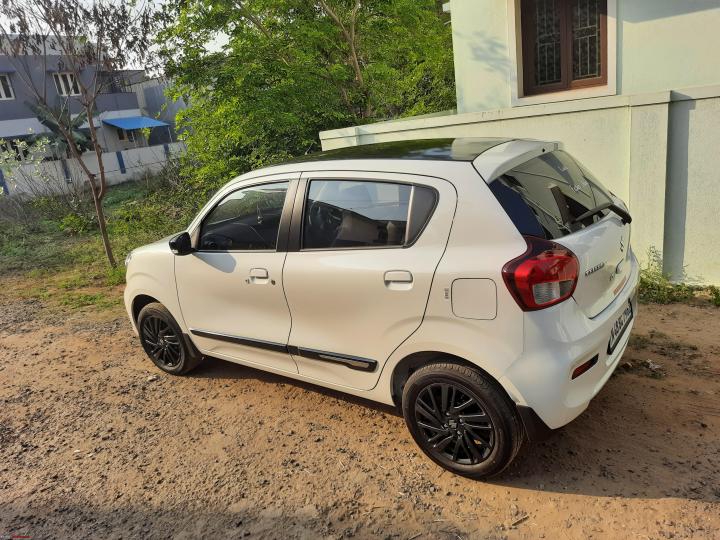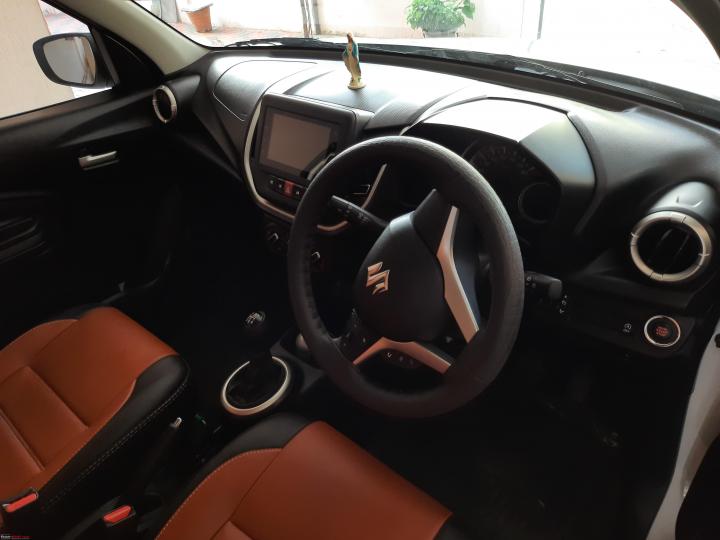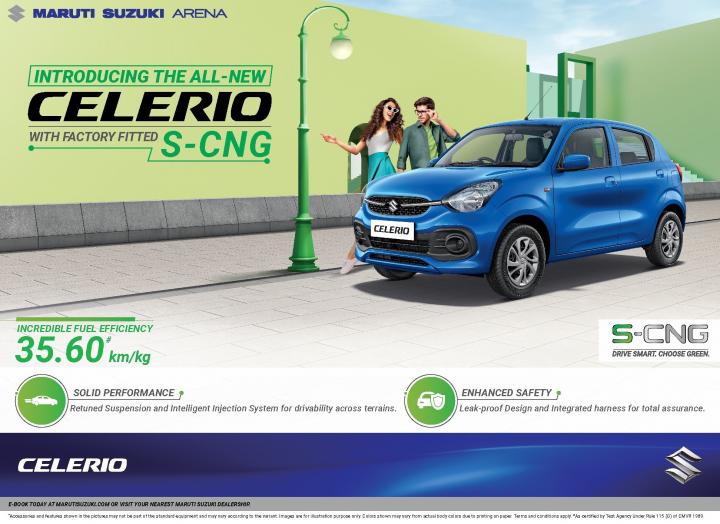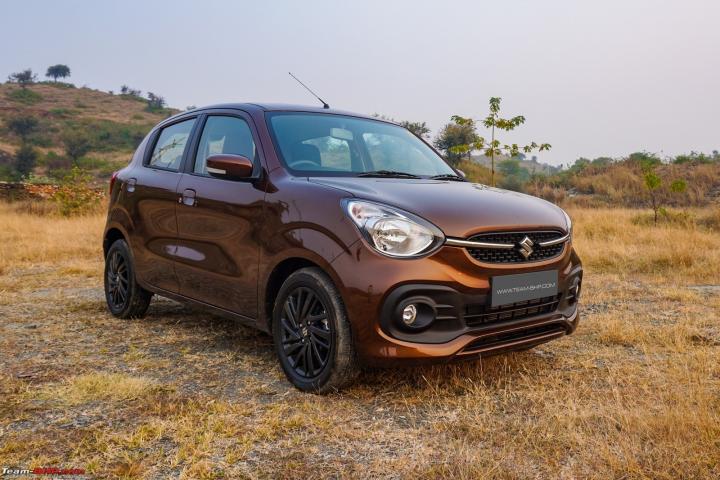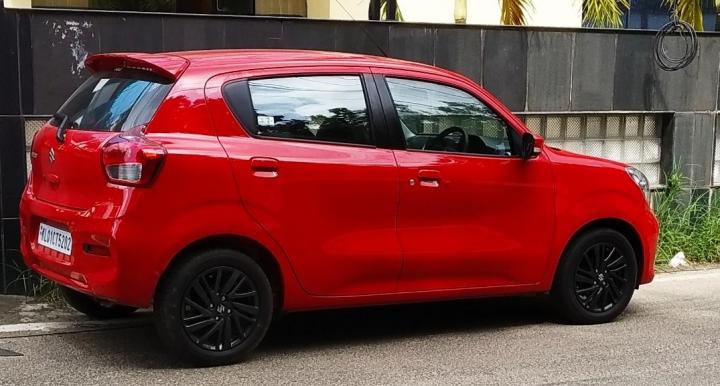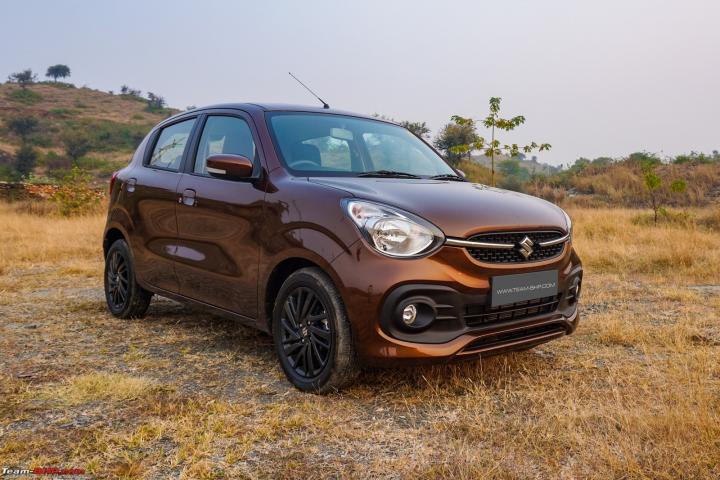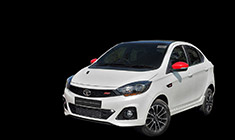News
Need a fuel-efficient & safe car for city driving under Rs 10 lakh
The new vehicle should be easy to drive & park in the city. It will replace either our ageing Maruti Dzire or WagonR.
BHPian busydrive recently shared this with other enthusiasts.
What Car
I used to think I am a car expert. Having successfully advised my family and friends in selecting the right car for them, multiple success stories are there, but boy, when I landed on this scenario even I am struggling to find out the right car. Hence, thought of taking inputs from you guys.
Context
We have two cars which are going to hit 15 years soon. We thought of replacing one of them and getting a new car.
- Car 1 - 12-year-old Dzire Petrol. Mileage around 70K. Has crazy power but bad mileage. Took out the remapping still mileage hasn't come back to decent levels. I get a max of 10 Kms per litre. Issue with this car - No airbags. Feel scared with the increasing number of rash drivers on the road these days. Also, has some sound coming in from differential - will need repairs of 50K in another 10K kilometers, plus new tyres in another 2 years.
- Car 2 - 11-year-old Wagon R. Very less used. Needs body work. No airbags. No technical issue but then it’s a very light car and lack of airbags makes me feel unsafe taking this out. New Tyres. Mostly does city duties but again we have to hit national highway multiple times given the location of our home.
So coming back to the query, we are planning to get a small car (Budget max 10 Lakhs) that will replace either Dzire or WagonR and can fulfil the following requirements:
- Easy to drive and park in the city.
- Dual airbags (it's there almost on all cars nowadays).
- Can see bonnet from the driver's seat. Yes, this is an ask from my wife and my father who aren't comfortable with cars where you have to drive purely on judgement like the i10, Baleno, Altroz. No offence to any owners here this is just how they feel comfortable.
- Good mileage needed as it's a city car and will do at least 1500 to 2000 kms in the city per month. Should I consider CNG?
- Manual and Auto - both are fine but if it is a manual, the clutch should be light and have a short throw.
- A car with slightly high seating is preferred as it will also be used to take my mom for doctor visits. She prefers the Wagon R to the Dzire for these runs.
- Not considering used cars at this stage.
Cars Considered
- Nexon EV- meets our requirements but is rejected due to budget. Didn’t consider Tiago or Tigor electric as they don't meet our criteria #3.
- Bolero (wild card entry) meets #3 but rejected due to size. Dad has a liking for this car.
- New Wagon R - Rejected. Though fits into the budget, too expensive. At 8.6 Lakhs on road for the top-end, this is insane pricing.
- Celerio ZXI Plus - Similar case like new Wagon R. Almost 8 Lakhs on-road. Has height adjust in ZXI Plus. Considered.
- Magnite. Too much cost-cutting evident. Wheel well cladding visible directly through the engine bay, no insulation for firewall area, minimal door rubber insulation. Any mild rains might make the engine bay very dirty - need to check with existing owner reports. Clutch - medium throw but hard. Still considering (XV executive - 8.4 on-road Bangalore).
- S Presso - Meets most of the criteria. But looks are not being favored in the family. Have to add accessories worth 70-80K to make it presentable. On verge of getting rejected but I felt this car fits most of our requirements.
- Eeco - Surprise entry. Almost everyone liked it due to the ease of driving. Plus CNG option is available.
- Kiger - Same as Magnite. Family preferred Magnite.
- Honda Amaze - 10 Lakhs on-road for S AT and less for other models. Has seat height adjust. Not sure of mileage. Top contender now. Manual has a light clutch but a slightly long throw. Rear headroom is in short supply but that's ok for us.
Additional Questions
- Should I go for CNG? Given petrol prices are going up and up. Amaze and Magnite aren't available in CNG but Eeco and Celerio are.
- Keep both and add aftermarket CNG to the Dzire and use it for a few more years till we get an affordable EV? Safety worries will remain.
- With Ethanol blended Petrol coming up does it make sense to buy a current-gen BS6 Petrol car now?
Requesting the members to share their thoughts here. Thanking you in advance.
Here's what BHPian Dhillon had to say about the matter:
Why haven't you considered the Ignis? I drive one and it's a pretty good car.
If going for the Alpha model, with height adjust, you can see bonnet. I am 5'11" and can see half the bonnet. And mine is a Delta variant without the height adjust.
I get around 14-15 km/l in the city without AC and 12-13 km/l with AC on. Considering your running, I would highly recommend going for the CNG option.
With CNG, the manual will be a better option.
Expect around 13-14 km/l in the city. Considering the price, I think this is VFM but again, your running is too high for a petrol-only car.
I would strike out the EECO considering the point that your replacement needs to be a safer car than your current one.
Here's what BHPian jigar1791@gmail had to say about the matter:
Your requirements directly take you to a desirable city commute - which at this point can be anyone from WagonR to Altroz to the Baleno.
I doubt WagonR to be too highly-priced. That brings it dangerously close to the Swift and Baleno territory. Carwale shows OTR for 1.0 CNG topping up at INR 692,000/- in Mumbai. If you can wait it out until the rumored launch of Tiago CNG automatic, it should be worthy of your selection process - India's first CNG automatic.
Go for the S-Presso if the weird looks are not a concern to you. It's basically 85% WagonR at about 80% of its price.
Your monthly running of about 1500-2000 kms screams for a CNG commuter. Per kg CNG cost is at around INR 3/-, whereas petrol will be at about INR 10/-. Monthly running of 1500 kms translates to a straightaway saving of INR 10,000!
In a nutshell, you can think of WagonR for now, with a serious thought to be given to S-Presso as well. If you are ready to wait out a bit, the rumored Tiago CNG automatic can also be considered once it is launched.
Here's what BHPian kosjam had to say about the matter:
I hate to be this blunt, but these are Maruti cars, the cheapest cars on road today. The prices will only go up and not down.
It would be better to sell both cars right now, much before the 15-year mark and go in for a safe car as per your preference. Wagon R also has a factory-fitted CNG kit.
Waiting for a cheaper EV is also pointless because cheaper won't mean in the range of 5-8 lakh. The most conservative estimates will put the number in the 8-10 lakh range OTR.
Check out BHPian comments for more insights and information.
News
South Africa: Made-in-India Suzuki Celerio goes on sale
In India, the Celerio is available in four variants with prices starting at Rs. 4.99 lakh (ex-showroom).
Suzuki has launched the second generation Celerio in the South African market. The car is manufactured and exported from Maruti Suzuki's production facility in India.
In South Africa, the Celerio is offered with a 1.0-litre petrol engine that produces 66 BHP and 89 Nm. The engine is mated to either a 5-speed manual or a 5-speed AMT.
The second-generation Celerio is based on the Heartect platform. The car features a redesigned front end with an oval grille, new headlamps and tail lights, as well as reworked front and rear bumpers. The car rides on 15-inch alloy wheels.
Inside, the Celerio gets a redesigned dashboard featuring a 7-inch touchscreen infotainment system with Maruti's SmartPlay audio system that offers Android Auto and Apple CarPlay connectivity.
In India, the Celerio is available in four variants with prices starting at Rs. 4.99 lakh (ex-showroom).
- Tags:
- Indian
- Celerio
- South Africa
News
My 2021 Maruti Celerio: 1st free service at 700 km/1 month
Apart from getting the regular service done, I also bought door protectors for my car.
BHPian PrasannaDhana recently shared this with other enthusiasts.
First Free Service Done
Odo: 700 km
It was due for the first service (1 month up). Just a regular check-up and wash.
I got the door protector on the sides installed. Damage to wallet 2600 INR.
They had bathed the dash with polish.
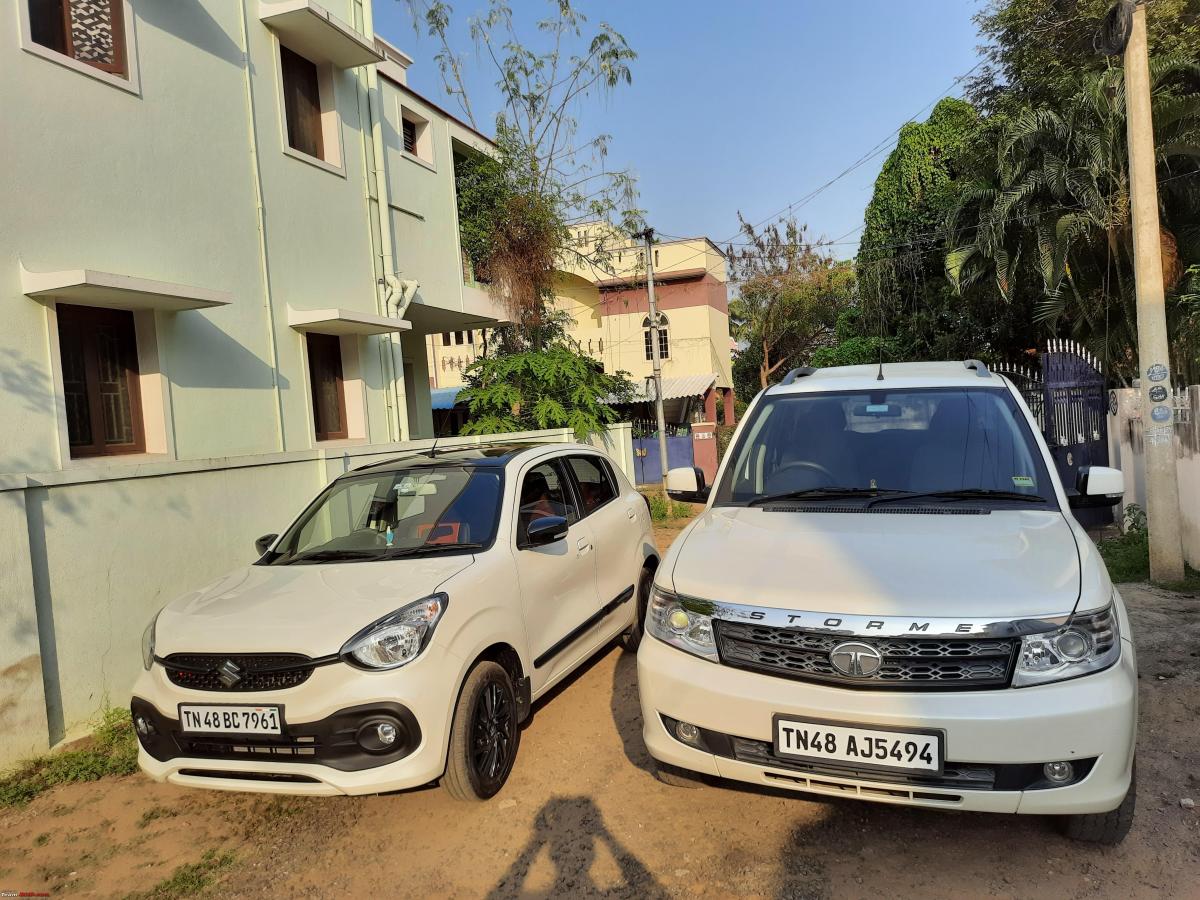
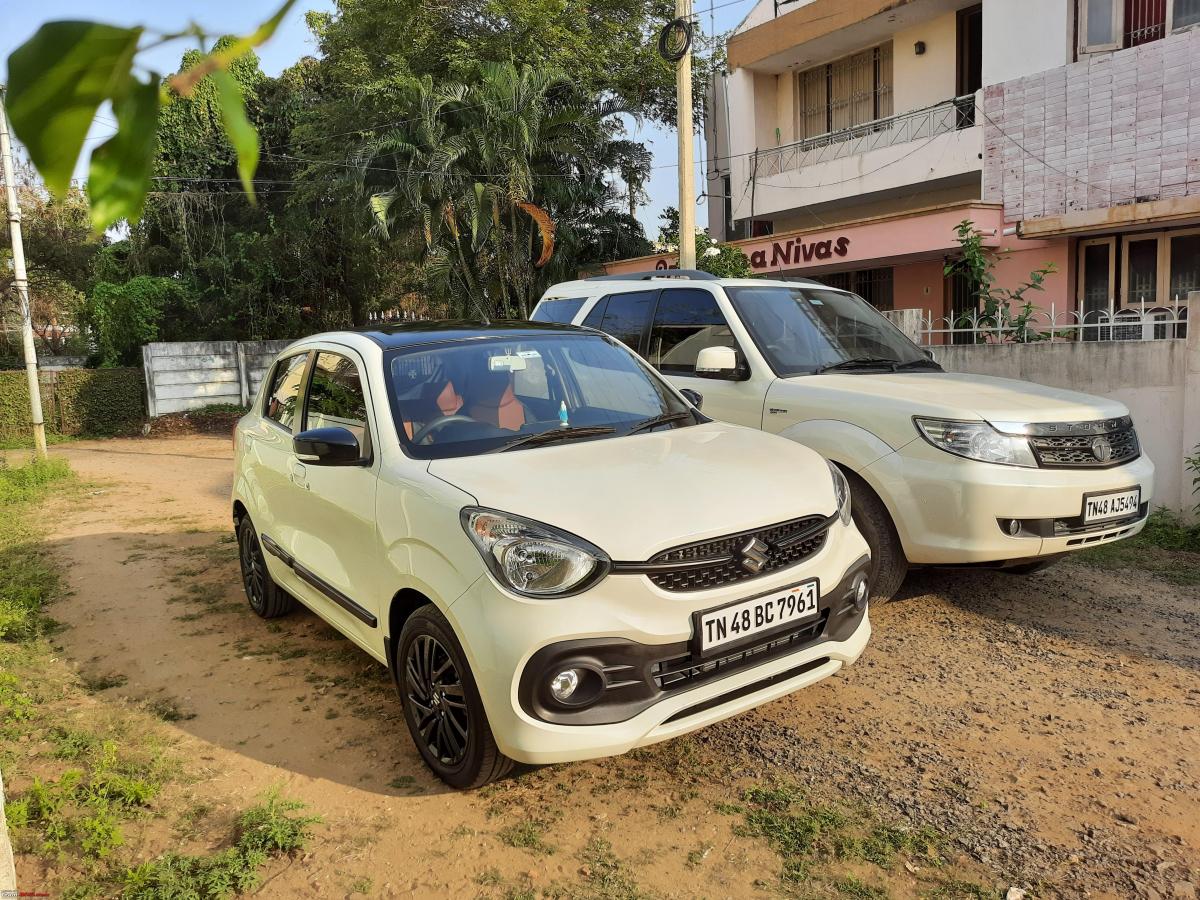



Check out BHPian comments for more insights and information.
- Tags:
- Indian
- Celerio
- Maruti
- Car Service
News
Maruti Suzuki Celerio S-CNG launched at Rs. 6.58 lakh
The Celerio S-CNG will compete with the upcoming Tata Tiago CNG.
Maruti Suzuki has launched a CNG variant of the Celerio hatchback. The Celerio S-CNG, as it is known, is available in VXi trim at a price of Rs. 6.58 lakh (ex-showroom, Delhi).
The Celerio S-CNG is powered by a 1.0-litre, 3-cylinder engine paired with a 5-speed manual transmission. The engine produces 56 BHP @ 5,300 rpm and 82.1 Nm @ 3,400 rpm when running on CNG. In petrol mode, it puts out 64 BHP @ 5,500 rpm and 89 Nm @ 3,500 rpm.
The Celerio S-CNG comes equipped with a factory-fitted CNG kit that has a capacity of 60 litres. Maruti's S-CNG models are equipped with dual interdependent ECUs and are tuned and calibrated to run on CNG. The company claims that the Celerio can deliver a fuel economy of 35.60 km/kg.
News
Maruti Celerio CNG unofficial bookings open
The Maruti Celerio CNG will compete with the upcoming Tata Tiago CNG.
According to a media report, select Maruti Suzuki dealerships have started accepting bookings for the upcoming Celerio CNG for a token amount of Rs. 11,000.
The Celerio CNG will be powered by a 1.0-litre 3-cylinder engine similar to the petrol version. This engine produces 66 BHP and 89 Nm, but when running on CNG, the overall output is expected to drop. It will be paired with a 5-speed manual transmission.
The second-generation Celerio was launched in November last year. It is available in four trim levels - LXI, VXI, ZXI and ZXI+. Depending on the variant, the CNG version could get a 7-inch touchscreen infotainment head unit.
The Maruti Celerio CNG will compete with the upcoming Tata Tiago CNG.
Source: Carwale
News
Rumour: Maruti Celerio CNG launch in January 2022
The Maruti Celerio CNG will compete with the upcoming Tata Tiago CNG.
Maruti Suzuki has quite a few new cars lined-up for launch this year and one of them is the Celerio CNG. According to a media report, it could be launched later this month.
The report states that the Celerio CNG could be launched around January 20, 2022. However, there is no official word regarding this yet.
The second-generation Celerio was launched in November last year. The car is based on the Heartect platform and is slightly larger than its predecessor.
Powering the Celerio is a 1.0-litre, 3-cylinder petrol engine that produces 66 BHP and 89 Nm. While the petrol version comes with either a 5-speed manual or 5-speed AMT, the CNG version will be manual only.
The Maruti Celerio CNG will compete with the upcoming Tata Tiago CNG.
Source: ET Auto
News
My 2021 Maruti Celerio: City & highway drive experience
Since I have done only 60 km in my car till now, so can't really comment about the fuel efficiency. However, the MID did show an average figure of 9 km/l.
BHPian Nanolover recently shared this with other enthusiasts.
Here are my impressions after a 50 km round trip on highway and city.
- The engine is silky smooth for a three-cylinder. You wouldn't feel it at all if you use the throttle sensibly and anyways AMT will upshift to the next gear. Almost comparable to the K12 in the swift. Absolutely no comparison refinement wise to the Tiago. Tiago is 50-75% louder depending on rpm range.
- The transmission is super smooth. Sets off without any jerks in creep, pause between gear changes is minimal. In fact, I think this might be Maruti's best AMT. The S-Presso feels jerky and clumsy in comparison (remember S-Presso was the best AMT I had driven till that point in time, compared to the useless one I had in my Tiago).
- Mileage. Engine feels tight and it has done only 60 kms for now. So can't comment. MID shows 9km/l average.
- Stop/ start is the single most irritating feature. Need to manually switch it off every time!
- Stability at speeds up to 120 km/h is good and not twitchy or nervous like the S-Presso. Closer to the Tiago (Tiago might have a 10% edge here).
- Road noise is comparatively more in the Celerio than Tiago although the smooth drivetrain I guess brings other noises to the fore.
- Low-speed ride of the Celerio is I feel superior to the Tiago (Tiago is stiffer and I used to get tossed around at alow speeds). I have kept my tyre pressure at 32 front and 30 rear.
- Interior space there is simply no comparison. Celerio is at least 25% more spacious. Tiago is much tighter front and rear. This should be a deciding factor for families who have a single car.
- Unlock request sensors on both doors. Very convenient to let in my kids without circling to the driver's door and then opening the left rear door.
- Steering is light and easy to twirl, although Tiago one is far superior. Point to note is it is not sticky like the one in my ex-Ignis.
Now the big question. Was it worth the 2 lakhs over the S-Presso?
Oh absolutely! I suggest members have a go in one and you will all be pleasantly surprised. And the car looks much much better in person than in pics.
Other points
- Not seen another new Celerio on the road to date. Maybe deliveries have not started? Even accessories shop folks who are used to seeing all sorts of cars, were very much interested when mine rolled up, checking out the interiors and commenting on the spaciousness.
- They were all shocked to see Maruti offering Yokohama tyres as standard fitment. I thought of upgrading, but after today's drive I feel it is more than sufficient for the power on tap and grip/noise is good.
Negatives
- Horn.
- Idle stop / start.
- Flap type and slippery door handles.
- Lateral and lumbar support of seats could be better (I will be upgrading the seats soon like in the S-Presso, so that problem will be fixed).
- My mom was complaining about the huge front seats and how it blocks her view. She was saying it looks like lorry seats.
- Price.
Reiterating once again, friends. Drive and see it to believe it. Driving and seeing it in metal might help justify the higher price.
Here's what BHPian raksrules had to say about the matter:
Thanks a lot for that short review. And I hate you for making me question myself now. But I am still planning to stick to my S-Presso booking since 2L extra is a pretty big amount for me to put for a new car when the current one is 6L. If it was a 50L car and 2L extra, I wouldn't have thought once. Not that I have that kind of money.
Maybe a couple of years down the line, I may evaluate other options.
Here's what BHPian Abhikumar629 had to say about the matter:
Ain't that too low when compared to the biggest USP of this car "Kitna deti hai". Do you have an updated figure yet? Going by the strengths of MS products, mileage is the only thing that they are confident about.
Check out BHPian comments for more insights and information.
News
2021 Maruti Celerio bookings cross the 15,000 mark
Depending on the variant, the waiting period for the Celerio is said to be around 12 weeks.
Maruti Suzuki has received over 15,000 bookings for the new-gen Celerio in just over a month since its launch.
The second-generation Celerio was launched on November 10 at a price of Rs. 4.99 lakh (ex-showroom, Delhi). The car is available in four variants - LXI, VXI, ZXI and ZXI+.
Depending on the variant, the waiting period is around 12 weeks. The delay is said to be due to supply constraints caused by the ongoing semiconductor shortage.
The 2021 Celerio is powered by a new K10C 1.0-litre, 3-cylinder petrol engine with an idle start/stop system. The engine puts out 66 BHP @ 5,500 rpm and 89 Nm @ 3,500 rpm and comes paired with either a 5-speed manual or a 5-speed AMT.
Source: Car and Bike
News
My 2021 Maruti Celerio: Initial impressions
I found the engine to be pretty silent and much smoother than the one in my Maruti S-Presso.
BHPian Nanolover recently shared this with other enthusiasts.
Presenting, first new Celerio on Team-BHP.
Got it an hour ago (home delivery) and took it for a quick spin to brim it up with petrol and bleed air pressure down to 32 psi front and 30 rear (was an insane 43 psi all round!). Will be going for a longer drive in the afternoon.
Initial impressions
- Engine is silent and way, way smoother than the unit in the S-Presso, especially at city speeds. Honestly, our S-Presso feels like a tractor in comparison (I might be biased due to the new car wow factor).
- Horn is useless, will be replacing it soon. Couple of updates are planned and she will be going to get those done tomorrow.
- Only accessories taken from MGA were the rear spoiler (red), vinyl floor mats and the 3D boot mat.
- Indus Motors and my Sales Advisor Ms. Raji (she handles all our cars) did a fabulous job of coordinating and handling everything. Kudos to them for a seamless experience.
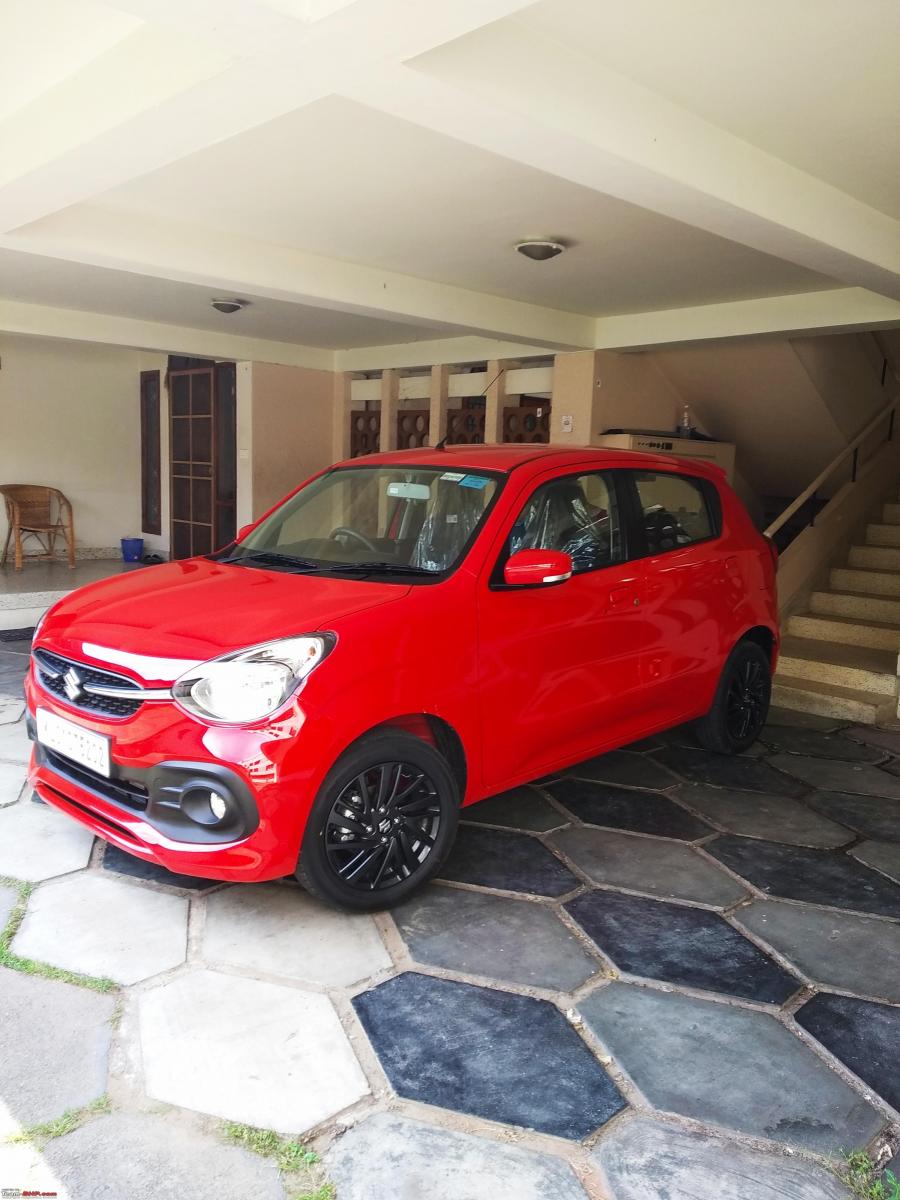
Here's what BHPian ron178 had to say about the matter:
Congratulations on your new ride and I wish you many happy years with it! I did not know deliveries for the Celerio would start so soon, or even this year, for that matter. It looks a lot better in your picture than it did during the media drives, and I actually think it looks quite nice in this paint. Which transmission option is this?
On another note, based on the deliveries, I was quite sure Global NCAP would test the Celerio only next year but this might just change that. One thing that might make a difference is that Maruti is targeting the Tata Tiago head-on, and considering how well it's selling with its 4-star (adult) performance I think there is a small chance Maruti might be aiming higher.
Check out BHPian comments for more insights and information.
News
2021 Maruti Celerio: Our observations after a day of driving
Release the light clutch and the Celerio rolls off from a standstill with ease. Driveability is excellent and the light kerb weight makes things easy for this little 1.0.
Driving the Maruti Celerio 1.0L Petrol MT
This is the 998 cc, 3-cylinder, 12V DOHC, all aluminium K10-C petrol engine that has been introduced with the Celerio. It churns out 66 BHP @ 5,500 rpm and 89 Nm @ 3,500 rpm. Like the previous versions of the K10, this engine is peppy and quite enjoyable to drive:
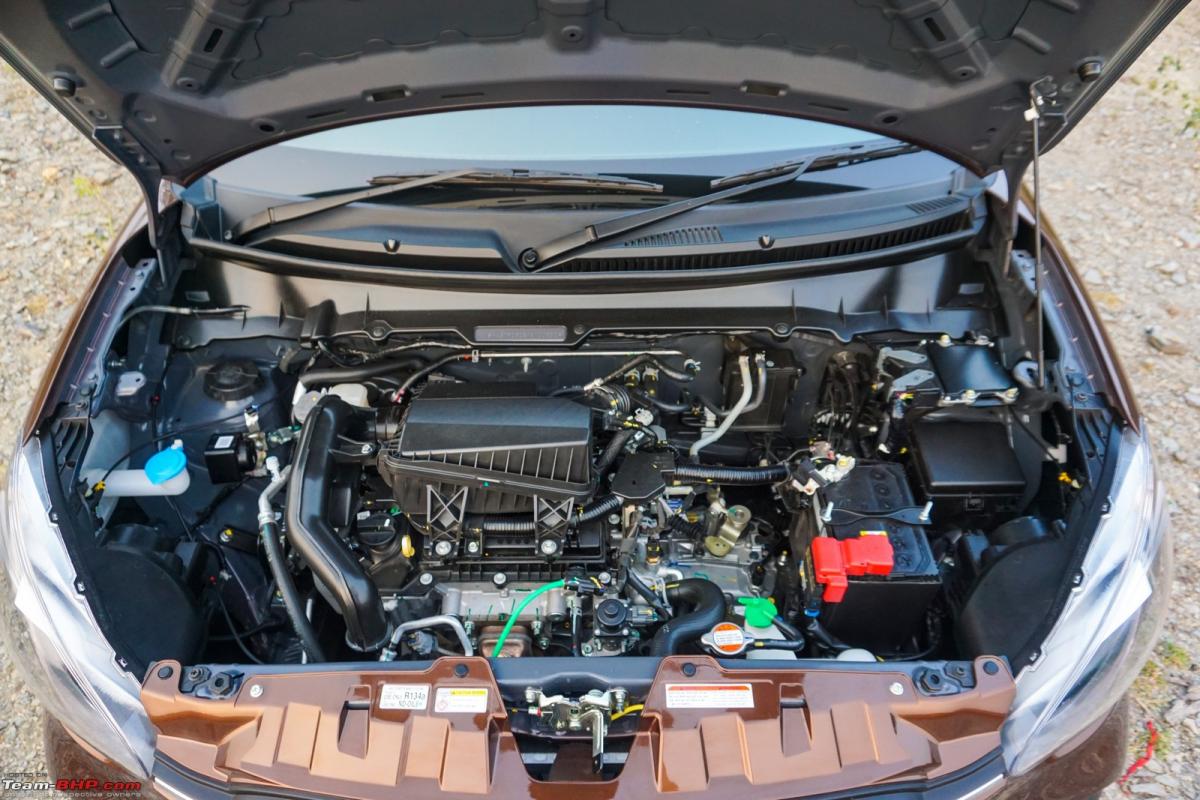
We’ve mentioned before that the Celerio is powered by the K10-C engine, but what exactly is different compared to the 'B' series engine that we’ve seen in the S-Presso and the WagonR? For starters, there are two notable additions – Dual Jet and Dual VVT. This means that there are two injectors (Dual Jet) per cylinder that spray fuel into the combustion chamber. Having two injectors leads to better atomisation and thereby cleaner combustion. It also means that the compression ratio has also gone up from 11 in the K10B to 11.5 in the K10C. VVT or variable valve timing adjusts the valve timing to increase fuel efficiency and in a 'dual' VVT system, both intake and exhaust valves are adjusted to maximise fuel efficiency and performance. The engine also gets a water-cooled EGR (exhaust gas recirculation) system. While most compression ignition (diesel) engines use EGR to reduce emissions, in spark ignition (petrol) engines, EGR actually helps in increasing efficiency. Apart from this, Maruti has also added an idle start-stop system that shuts off the engine while idling, which also helps the fuel efficiency.
With your leg on the clutch pedal, press the start/stop button to bring the engine to life. Release the light clutch and the Celerio rolls off from a standstill with ease. It can easily move away from 0 km/h in second gear too! Driveability is excellent and the light kerb weight makes things easy for this little 1.0. The motor feels very tractable in the city and it’s got a practical state of tune. The healthy low-end & perfect gearing means you do not have to downshift too often. Driving around in the city won’t be much of an issue for this small hatchback, in fact, it feels very much at home.
Out on the open road is where you would wish that this car had the 1.2-litre engine. Don’t get me wrong, the 1.0 engine performs alright and has all the traits that you would expect of a K-series motor. But, after having driven the WagonR 1.2, which is not much heavier, you will be left longing for the bigger engine (especially when it is available for lesser money). The Celerio’s 83 BHP / ton power-to-weight ratio makes a big difference here (WagonR = 99 BHP / Ton). Even the S-Presso feels more lively given that it’s ~ 100 kg lighter (92 BHP / ton). Compared to these two, the Celerio feels just about okay in terms of highway performance. Cruising at 100 km/h in 5th gear, the motor spins at ~2,750 rpm, while 120 km/h is seen at ~3,250 rpm. For quick overtaking manoeuvres, while cruising at 100 km/h, you will have to shift down to 3rd gear as there’s not much progress when you floor the A-pedal in 4th gear. It’s best to cruise between 90-100 km/h in 5th gear. The tall 3rd gear and occasional downshifts to 2nd would take care of your pedal-to-metal driving when on twisty roads. Overall, the motor responds well when pushed hard, but leaves you wanting for more.
The clutch is nice and light to operate, with just the right travel length. The 5-speed gearbox is good to use with throws on the shorter side. It’s a pleasure to operate, even if it is slightly rubbery.
Noise, Vibration & Harshness (NVH)
Since this is the new platform, Maruti has gone for a pendulum type engine mounting system rather than the conventional 3-point mounting system from the previous generation Celerio. This has in turn made a lot of difference in reducing the engine vibrations. Heck, the 3-cylinder doesn’t even have a balancer shaft and still, the vibrations are well controlled.
At city speeds, the engine noise is kept under control and isn’t intrusive. But as the revs climb, the engine does sound strained and IMO it’s not very sporty like most enthusiasts enjoy. Cross 80 km/h and the road noise and wind noise started to creep into the cabin and at 100 km/h, they’re very audible. What’s worse, while driving over broken roads, you’ll hear pebbles hitting the inside of the wheel arches (as there is partial / no cladding).
Mileage & Fuel Economy
Maruti has done a lot of things to maximise the fuel economy. The ARAI-certified fuel economy of the Celerio MT (LXI, VXI and ZXI variants) is 25.24 km/l while that of the ZXI + variant is 24.97 km/l. With the AMT gearbox, the fuel economy is 26.68 km/l for the VXI variant. The ZXI and ZXI+ AMT variants have a fuel economy of 26 km/l. This engine is known for its frugality & will give owners no reason to complain.
Driving the Maruti Celerio 1.0L Petrol AMT
The previous generation Celerio was the first Maruti car to get the AMT or as Maruti calls it, 'Auto Gear Shift' in India. The 2021 Celerio gets the latest generation Magneti Marelli sourced AMT unit for its 5-speed manual transmission which is available in the VXI, ZXI and ZXI+ variants.
The AMT mechanism is a simple bolt-on job and uses the Celerio MT's existing gearbox. It’s pretty straightforward in the way it works. Mechanically, the AMT gearbox is identical to the Celerio’s manual transmission. What's different is how the clutch is operated and how the gears are shifted. In the manual, the driver is responsible for these tasks. With the AMT, hydraulic actuators located in the engine bay operate the clutch and shift gears. There's no clutch pedal, and zero driver input is required for gearshifts, making it exactly like a conventional automatic to drive. Simply put, the mechanical functions of operating the clutch and gear lever have moved from inside the cabin to the engine bay. To know more about AMTs & how they work, click here.
Starting the engine up must be done with the gear lever in neutral. You have to press the brake pedal as well, else the engine won't fire up. There's no 'P' (park) mode or gear unlock button like in a conventional AT. Once fired up, slide the gear lever to 'D' (drive) to get going. As you release the brake, the car will move forward without any accelerator input. However, it doesn't move too fast and will top out at about 6-7 km/h, without any driver input. When you press the accelerator, you'll notice that the throttle response is quite immediate. It's exactly like a pure manual in this respect.
In city, traffic is where the AMT truly shines and brings the most benefits. There's no clutch pedal and there's no requirement for the driver to repeatedly shift between Neutral-1st-2nd either. In crawling bumper to bumper traffic, you don't need to give any accelerator input. Just release the brake a little bit, and the car crawls forward. The start-off is extremely smooth. Budget car owners will love the fact that their left leg is completely relaxed. The tricky part with the AMT in city driving though is parking into tight spots. Unlike a conventional AT where it's possible to ease the car forward very gradually, the AMT is more of an 'on or off' solution, as it tries its best not to slip the clutch more than required. This results in a more eager movement, which can be a bit tricky when getting in & out of tight parking spaces.
Gear-shifting quality is a universal sore point for Automated Manual Transmissions. The Celerio's AMT unit which is the improved version of the previous generation is actually very good. In fact, it seems like Maruti has finally caught up with Hyundai Santro’s smooth-shifting AMT. With a light foot on the accelerator, the gearshifts are barely noticeable. First-time automatic drivers won't have any complaints with the AMT. It’s only when you are driving with a heavy foot that the shifts are noticeable in the form of the typical head-nod.
People who are used to driving AMT cars will like this unit for sure. One of the ways to make your drive even smoother is to let off the accelerator at intervals, and the AMT will seize that opportunity to upshift. E.g. When going from 0-40 km/h, let off the accelerator very slightly at 10, 20 and 30 km/h, and the AMT will take each one of those opportunities to upshift a gear - almost like you told it to! Shift quality gets better between higher gears and is virtually seamless when going downhill. The AMT unit is smooth even while downshifting. While I was driving, I asked Zappo to spot the downshifts without looking at the tachometer. The downshifts were so smooth that he didn’t feel them from 5th gear to 3rd while decelerating gently. There's absolutely no noise or clunking when the gears shift.
Fuel efficiency is without a doubt what the AMT has been tuned for. This means the transmission is very eager to upshift and before you know it, you will be cruising along in 5th gear at 50 km/h. Even in crawling traffic, the AMT will upshift to 2nd gear at fairly low speeds. When the rpms drop, the transmission will downshift to a lower gear. The 'current gear indicator' on the MID keeps you in the loop as to which gear is engaged. It's quite a novelty and will be appreciated by prospective and existing owners of the Celerio AMT. The idle start-stop feature in the AMT variant can get annoying in bumper to bumper traffic. While it does maximise the fuel economy, the system shuts off the engine quite quickly and does take time to start up and get a move on. Only people who seriously want to get the most out of the fuel would be using this feature.
The engine gives out a nice blip on kick-down and doesn't hesitate to drop two ratios at a time (e.g. 5th to 3rd). With a heavy foot on the accelerator, the AMT holds a gear all the way till the end of the rpm range before upshifting. The driver also has an option of 'manual mode' to prevent premature upshifts while overtaking on highways.
Manual Mode has other advantages, especially for the more enthusiastic drivers who want a higher degree of control. Like other hatchbacks with AMTs, the Celerio offers a Tiptronic-like manual mode. Towards the right of the MID gear indicator, there is a small alphabet readout: 'M' for Manual & 'D' for Drive, indicating the mode that you are currently in. In manual mode, the AMT will still not upshift automatically unless you reach the end of the rpm range. Conversely, if the rpm drops too low, the AMT will downshift to prevent the motor from stalling. If you try to upshift at too low an rpm or downshift at too high an rpm, the AMT will ignore your instructions and flash the gear indicator in protest. It's always a good idea to switch to manual mode before your favourite ghat section because it prevents sudden & unsettling gear changes mid-corner. An advantage of manual mode is that you can increase the amount of engine braking when going downhill. It's quite effective, although not as aggressive as in a pure MT. We recommend shifting to manual mode before overtaking when you need engine braking and of course, the times that you are in the mood for some fun.
The AMT unit is equipped with an extremely useful Hill Start Assist feature. What’s more impressive is that this isn’t the basic hill start assist feature that you see in most budget AMT units where the hill start assist is essentially an extension of the creep function. In such cases, the car rolls back at least a foot before going ahead. In the case of the Celerio, however, this is a proper hill start assist feature that will engage the brakes and hold the car in place on a slope. Be it a gentle incline or a steep one, the Celerio doesn't roll back an inch. Very impressive! Unfortunately, the same function isn’t offered in the MT variants. Technically speaking, it shouldn’t have been much of a pain to add the same system in the MT variants, especially if it's not a bare basic creep extension hill hold assist. It'll prove to be very useful for newbie drivers who otherwise will be burning up the clutch on steep inclines.
I'd also like to add that the AMT manages the clutch & gearbox a lot better than sub-par drivers out there. There's no doubt that it is more talented than a below-average driver in choosing when to shift, how to shift and what gear to drive in.
Suspension
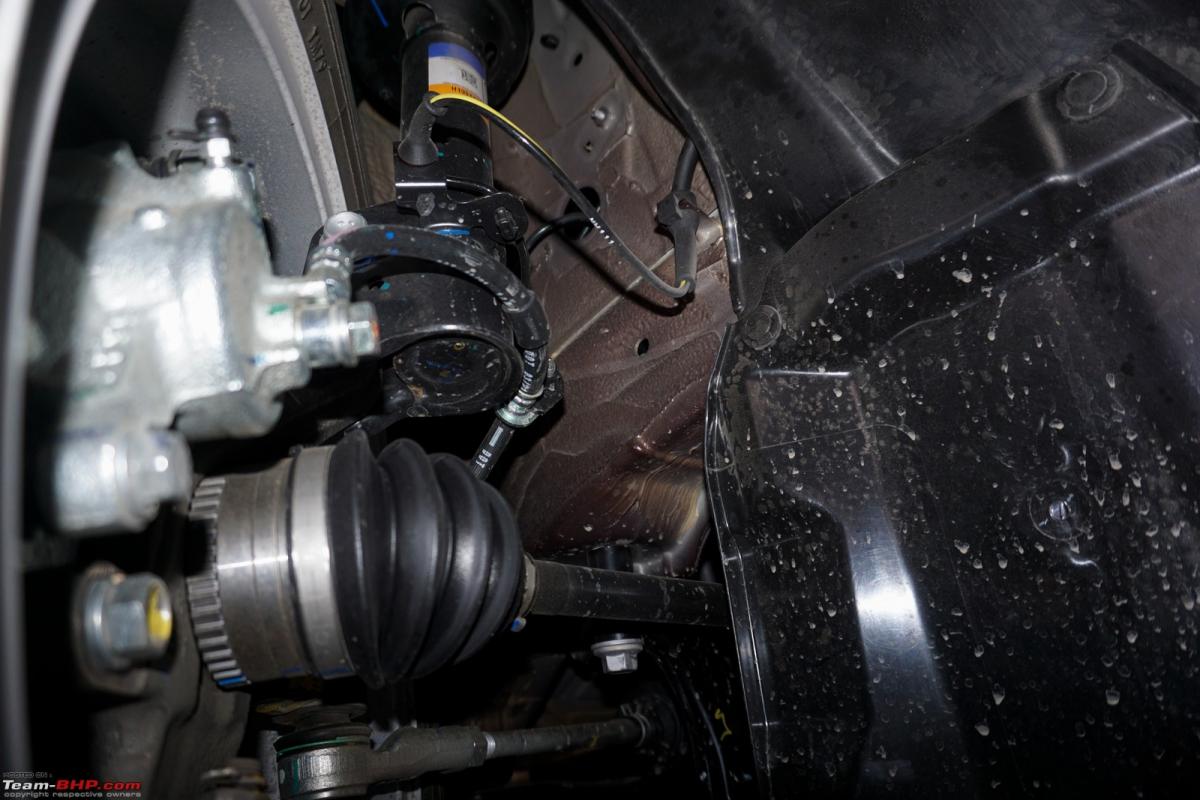
Ride Comfort
The Celerio comes with a MacPherson strut suspension at the front and a torsion beam with coil springs at the rear. While most of the other cars that are based on the Heartect platform have a softer front suspension, the Celerio has a slightly stiffer side to it. Small bumps are felt, while large potholes register themselves sharply in the cabin. The suspension isn't silent in its operation either, and you can hear it work on a patch of bad road.
The 15-inch rims are shod with 175/60 tyres. The recommended tyre pressure is 36 PSI at the front and 32 PSI at the rear. That’s unusually high for the front and is also one of the contributors to the stiff ride. We would recommend dropping it down a little for a cushier ride in the city. With the slightly stiffer suspension, however, vertical movement at high speeds is well controlled and the car doesn’t bounce around at 80-100 km/h.
Handling & Dynamics
As you would expect with a stiffer suspension setup, the straight-line stability is satisfactory. Driving at 120 km/h also doesn’t feel as daunting as it would in the previous generation Celerio. People taking the car on long road trips won’t be disappointed. A low centre of gravity also means that the body roll is well controlled. On long bends, the Celerio holds its line well without feeling nervous. Quick lane changes are also handled very well and the car seems eager to change directions. When pushing the car hard, you will notice that the chassis and the suspension can easily handle a lot more than 66 BHP available. The 175/60 R15 Yokohama BluEarth FE tyres on our test car provided decent grip.
Steering
The electric power steering in the Celerio is one-finger light during parking and city speeds. This makes it a very easy car to drive in urban surroundings. However, it can also be unnerving as some might feel the steering is too light and vague in the centre and you get no feedback at all. It’s pretty much dead like a video game steering. The mass market will like it though. At higher speeds, the steering does weigh up, but the complete lack of feel or feedback can be unnerving. Like the steering in most Maruti cars, there is no strong return to centre action. Leave the steering at a slight angle while driving and you will keep on going in that direction. You have to manually straighten it.
Braking
The Celerio is equipped with disc brakes at the front and drum brakes at the rear. The brakes perform well and as you would expect without any drama. I wish there was a more progressive feel to the brakes though.
Niggles & Problems
The previous generation Celerio had quite a few issues with the AMT unit. Hopefully, the newer generation Magneti Marelli AMT unit isn’t riddled with problems. Apart from this, Maruti has a wide service network and part availability is never much of an issue. So ownership experiences should be satisfactory. That being said, get the extended warranty without giving it a second thought.
Continue reading the discussion on the 2021 Maruti Celerio on our forum.
Pages



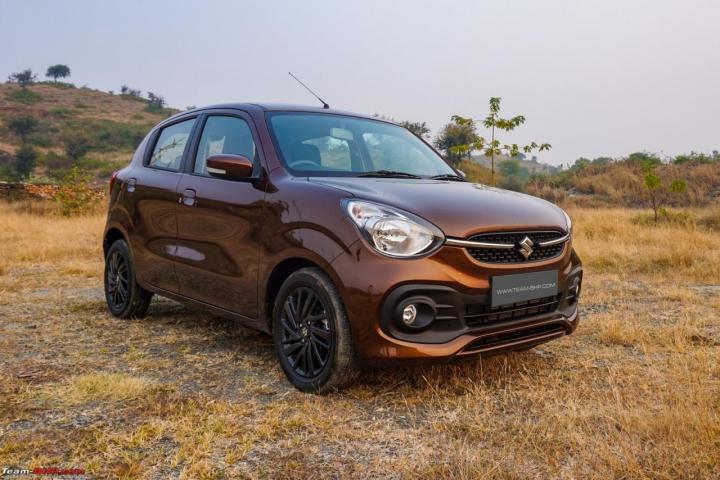

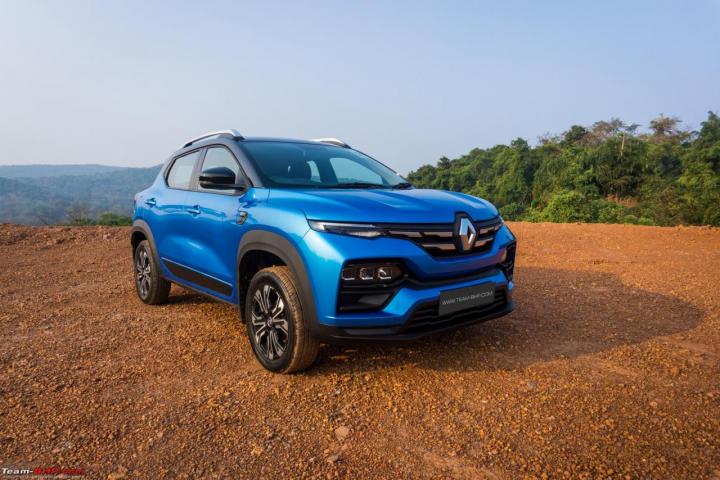
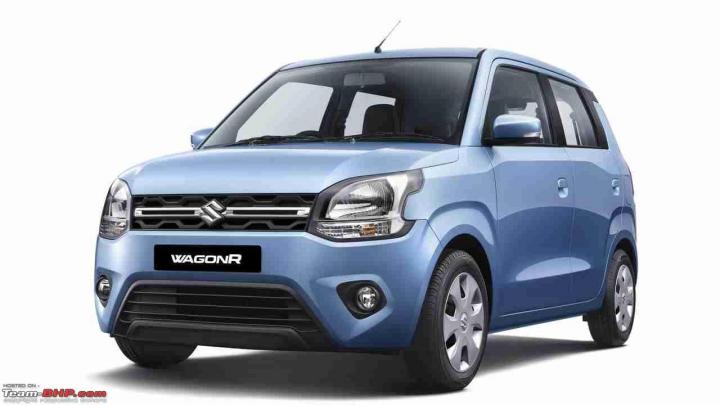




.jpg)



.jpg)




